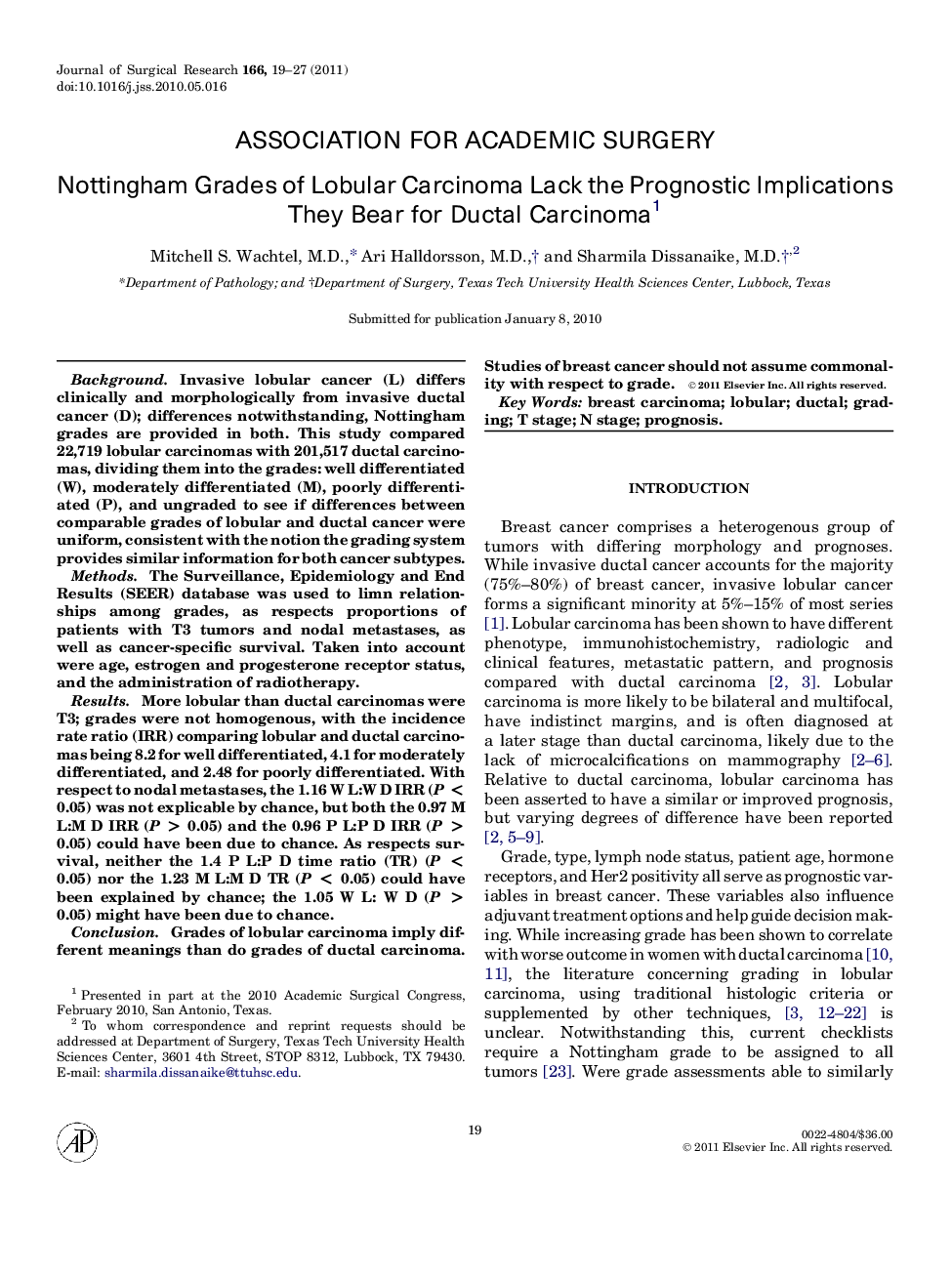| Article ID | Journal | Published Year | Pages | File Type |
|---|---|---|---|---|
| 4302773 | Journal of Surgical Research | 2011 | 9 Pages |
BackgroundInvasive lobular cancer (L) differs clinically and morphologically from invasive ductal cancer (D); differences notwithstanding, Nottingham grades are provided in both. This study compared 22,719 lobular carcinomas with 201,517 ductal carcinomas, dividing them into the grades: well differentiated (W), moderately differentiated (M), poorly differentiated (P), and ungraded to see if differences between comparable grades of lobular and ductal cancer were uniform, consistent with the notion the grading system provides similar information for both cancer subtypes.MethodsThe Surveillance, Epidemiology and End Results (SEER) database was used to limn relationships among grades, as respects proportions of patients with T3 tumors and nodal metastases, as well as cancer-specific survival. Taken into account were age, estrogen and progesterone receptor status, and the administration of radiotherapy.ResultsMore lobular than ductal carcinomas were T3; grades were not homogenous, with the incidence rate ratio (IRR) comparing lobular and ductal carcinomas being 8.2 for well differentiated, 4.1 for moderately differentiated, and 2.48 for poorly differentiated. With respect to nodal metastases, the 1.16 W L:W D IRR (P < 0.05) was not explicable by chance, but both the 0.97 M L:M D IRR (P > 0.05) and the 0.96 P L:P D IRR (P > 0.05) could have been due to chance. As respects survival, neither the 1.4 P L:P D time ratio (TR) (P < 0.05) nor the 1.23 M L:M D TR (P < 0.05) could have been explained by chance; the 1.05 W L: W D (P > 0.05) might have been due to chance.ConclusionGrades of lobular carcinoma imply different meanings than do grades of ductal carcinoma. Studies of breast cancer should not assume commonality with respect to grade.
